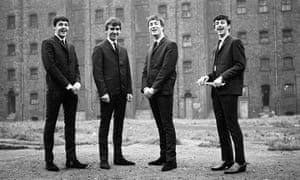via OUP Blog by Zachary Cuevas and Ben Leonard

From tales of Medusa’s wretched gaze turning men to stone to the cunning Sphinx torturing the city of Thebes, supernatural creatures and beings have long been a part of poems and children’s stories for centuries. Ghost stories, urban legends, and tales of frightening monsters still thrill us today. The ancient world was no different. The Greeks’ and Romans’ fears and superstitions informed their culture, and have long fascinated scholars intrigued by the extant corpus of mentions of witches, ghosts, and monsters in Greek and Roman literature.
Continue reading
===================================
via Boing Boing by Caroline Siede
Courtesy of the YouTube channel Skunk Bear.
Catch it here
===================================
via The National Archives Blog by Dr Richard Dunley
Files released today [26 September 2016]at The National Archives reveal the inside story of Juan Pujol Garcia, codenamed Garbo, the most remarkable of Britain’s Second World War Double Cross agents.
The files show how he fed misinformation to the Germans in order to deceive them about Allied intentions on a number of topics, most notably the timing and location of the D-Day landings.
They also reveal the price of this success, particularly on Garbo’s young wife, who had been an integral part of setting up the espionage network and yet soon came to be seen as the biggest threat to its success.
Continue reading
===================================
via Boing Boing by Andrea James
A paper published this summer looked into over 100 times humpbacks were observed disrupting orcas who are hunting, like these humpbacks trying to save a grey whale and calf. But why do they do it?
Scientists propose the whales either mob like this to save a fellow humpback then stick around to help whatever is being hunted, or they just hate orcas and love their fellow sea friends, formally known as “interspecies altruism”.
Continue reading and view video
===================================
via The National Archives blog by Molly Broughton
During my internship at The National Archives, a part of my Masters in Public History at St Mary’s University, Twickenham, I have been analysing the Middlesex Military Service Appeal Tribunal Papers.
While there are several grounds from which exemption from Military Service could be granted, it is ground D which I find myself primarily interested in: that serious hardship would ensure if the man were called up for army service, owing to his exceptional financial or business obligations or domestic position. I became increasingly interested in what would be considered, by the tribunals, as genuine domestic hardship.
Continue reading
===================================
via OUP Blog by Anatoly Liberman
Caution is a virtue, but, like every other virtue, it can be practised with excessive zeal and become a vice (like parsimony turning into stinginess). The negative extreme of caution is cowardice. Although in dealing with historical linguistics, one should beware of jumping to conclusions, sometimes explorers succeed in revealing the truth, and then the time comes for accepting it.
Continue reading
===================================
Want to know why 50,000 people showed up to pay their respects at the funeral of Jean-Paul Sartre? Three new books may provide the answer.
via New Statesman by Ray Monk
On YouTube there is a three-minute clip of the funeral of Jean-Paul Sartre. The funeral took place on Saturday 19 April 1980 and the television coverage from which the clip is taken follows the journey of the hearse from the hospital where Sartre died to Montparnasse Cemetery, where he was to be buried – a distance of about three kilometres. Along the way, the hearse moves through a staggering number of people. The commentator says that there are 50,000 mourners in total, 30,000 on the streets leading to the cemetery and another 20,000 at the cemetery itself. When the camera pans out, you can see how extraordinarily packed the streets are; when it homes in on some of the faces, you notice that many of the mourners are young, in their early twenties. If you did not know whose funeral it was, you would guess a famous actor or actress, a rock star, or some such popular public figure as Diana, Princess of Wales or Winston Churchill. It would never occur to you that what you were seeing was the public reaction to the death of a philosopher.
Continue reading
===================================
via The Guardian by Eva Wiseman

Fab four: (from left) Paul, George, John and Ringo in Liverpool in 1962. Photograph: Copyright Apple Corps
When George Martin’s son recently remixed the Beatles’ live recordings, he removed the screams. Hearing snatches of the new songs makes me feel uncomfortable, as if… as if the music has been caught just coming out of the shower, too naked, too raw. And also it seems to miss the point. If you want the pure music there are the studio albums – if you want the live experience, you need the fans.
Continue reading
===================================
via 3 Quarks Daily: Peter Schjeldahl at The New Yorker

Detail from a choir book depicting the prophet Isaiah outside the city.COURTESY TERRA SANCTA MUSEUM, JERUSALEM, AND MARIE-ARMELLE BEAULIEU
Jerusalem was among the first conquests of the Arab Caliphate, in 638. It was a polyglot city, in which Christians suffered oppression, when, in 1099, armies of the First Crusade took it and massacred nearly all the Muslim and Jewish inhabitants. The lavishly renovated Church of the Holy Sepulchre, on the supposed site of Christ’s Crucifixion and Resurrection, stood near the Al Aqsa Mosque and the Dome of the Rock, built on the ruins of the Hebrew Second Temple, which were temporarily converted to a palace and a church, respectively.
Continue reading and then maybe link to the information about the exhibition
===================================
via Boing Boing by Rob Beschizza

The 1981 Radioshack computer catalog is beautifully illustrated, but everything in it is complete TRS.
Aah, the memories. My first personal computer was a portable from TRS – rather like a modern electronic typewriter (do they still make these?) except that it linked to a "proper" system.
See for yourself
No comments:
Post a Comment